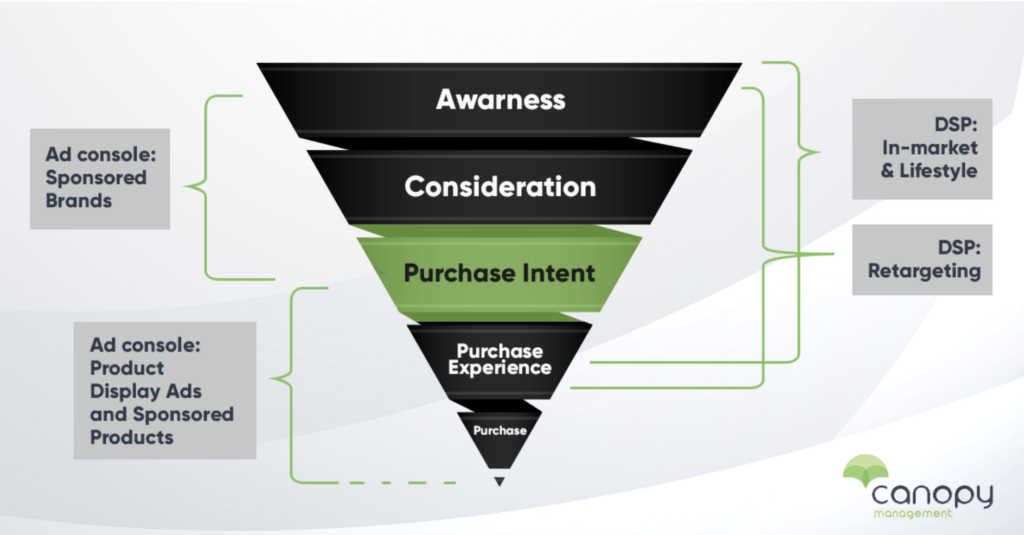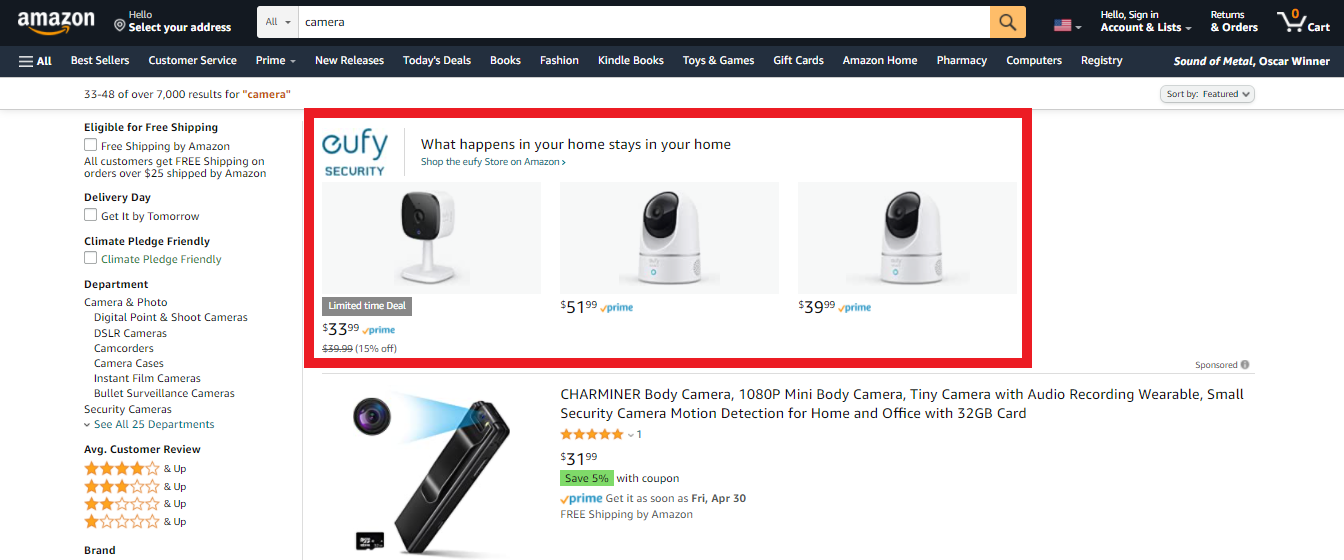Over the last 12 months, cutting-edge AI technologies have been revolutionizing the way that entrepreneurs can use dynamic pricing. That’s enabled brands of all sizes to easily adopt adaptive tactics. But it’s Amazon that has pioneered the most effective...
Over the last 12 months, cutting-edge AI technologies have been revolutionizing the way that entrepreneurs can use dynamic pricing. That’s enabled brands of all sizes to easily adopt adaptive tactics.
But it’s Amazon that has pioneered the most effective strategy, leveraging complex algorithms to optimize prices for both competitiveness and profit. Multiple times per day, Amazon alters the cost of millions of items, responding rapidly to rivals while maximizing consumer value.
Thinking About Hiring an Amazon Management Agency?
Canopy’s Partners Achieve an Average 84% Profit Increase!
Let’s talkThis nimble automation allows Amazon to outflank competitors, using variable pricing as a key business advantage. Moving forward, more companies will mimic such AI-powered solutions, making dynamic price modulation table stakes in eCommerce.
Walmart is known for their aggressive pricing, but Amazon’s dynamic pricing strategy leaves Walmart in the dust. When it comes to rate of change, adjusting product costs up to 50 times more frequently.
Though some shoppers may be frustrated by a seeming lack of price stability, the agility pays dividends for Amazon’s bottom line. By responding rapidly to competitors and market fluctuations, Amazon maximizes both sales and earnings across its digital shelves.
This ability to pivot on a dime allows Amazon to stay a step ahead, using variable pricing to undercut rivals when advantageous while increasing profits on in-demand or underpriced items. While customers may crave consistency, Amazon’s algorithmic adaptability gives it a flexible edge.
Now, Amazon has been forced to take a little of their own medicine.

Shein’s Actions are Forcing Amazon to Play Defense
Amazon has dramatically reduced the fees it charges merchants for clothing as they attempt to compete with rapidly-rising Chinese fast-fashion retail site Shein.
Amazon announced its intention to lower the transaction fee it charges sellers from 17% to just 5% for under-$15 apparel items.
As the top clothing retailer in the United States, including both ecommerce and brick-and-mortar sales, Amazon dominates the category – but not without imposing steep costs on sellers.
Merchants on Amazon’s marketplace must fork over a 17% commission on each apparel item sold, up from 15% since Amazon raised their cut in April 2018. Additionally, fees apply for fulfillment, advertising, and other services required for a merchant to gain traction on the platform.
All told, the charges involved make clothing one of the most financially demanding Amazon categories for an outside company to find success in. With high marketplace levies set as table stakes, turning a profit selling garments on Amazon presents a significant challenge.
Though a fraction of Amazon’s size, fast fashion brand Shein has exploded onto clothing ecommerce through lightning-fast adaptation. With 2022 gross merchandise value surpassing $40 billion – though less than 10% of Amazon’s might – Shein has flourished by specializing in trending apparel supplied at breakneck speeds.
Their infrastructure introduces thousands of new garment designs daily, rapidly adjusting production volumes according to demand signals. This agility has powered Shein to become the largest native digital fashion retailer, fine-tuned to dress Generation Z in whatever captures the fashion world at the moment.
Even for giants like Amazon, matching the pace and fluidity of Shein’s shape-shifting clothing empire poses a rising threat.

Amazon is LOWERING Fees to Compete With Shein
Facing intense pressure from Shein’s ultra-fast fashion juggernaut, Amazon is implementing drastic measures to bolster competitiveness in budget apparel.
As detailed above, for clothing priced under $15, Amazon has slashed referral fees from a steep 17% down to just 5% – over a 65% reduction. Items costing $15 to $20 will see reductions, with commissions lowered from 17% to 10%.
This relaxing of fees will offer sellers the bandwidth to drop prices per garment while retaining margins. By empowering discount pricing on inexpensive styles, Amazon aims to answer Shein’s lucrative connection to Generation Z shoppers.
Though the 17% rate holds steady for costlier merchandise, opening the door to more bargain basement pricing shows Amazon’s urgency to halt Shein’s momentum.
While Shein may not threaten Amazon overall marketplace dominance, in the fast fashion arena, Shein has become a formidable foe.
Though expanding into additional categories, opening international manufacturing, building domestic warehouses, and launching a marketplace, Shein’s foundation still firmly centers around lightning-fast China-sourced apparel.
Shein’s ability to get out in front of clothing trends positions Shein to nibble away at market share even from a dominant force like Amazon. For Amazon to keep pace, matching the agility and fashion instincts of clothing specialists like Shein is clearly an urgent priority.

How Can Amazon Sellers Use This New Information?
To follow in Shein’s footsteps, and take advantage of this tiny crack in Amazon’s facade of invincibility, as an Amazon seller, you need to do two things well.
Take the time to build your brand Exploit the reach of social media and micro influencersShein has cleverly curated a brand experience that resonates powerfully with customers. Through sharply focused category expansion, community building, and culturally relevant engagement, Shein created a tribal sense of identity and belonging between youthful shoppers and the company.
This cultivates a perception of Shein as a lifestyle brand that “gets it” rather than simply a boring, transactional storefront.
Through the many TikTok style stars showcasing identifiable #Sheinhaul outfits of the day to billions of viewers, Shein has proven itself aligned with Gen Z identity.
Meanwhile, Shein’s tens of millions of Instagram users reinforce that beyond simply purchasing clothes, customers feel connected to Shein and its embracing of youthful values. This results in mass affiliation and vocal fan support dwarfing Amazon’s more detached, transactional relationship with shoppers.
How Canopy Management Can Help
The time is now for merchants to make big bets on owning relationships with the next generation of buyers. Rather than rely on Amazon’s shifting priorities, sellers should take the time to build interactive communities across social platforms and collaborations with micro influencers.
By taking a page from Shein’s plugged-in brand success, crafty Amazon merchants can future-proof their footing with youth audiences. A well-cultivated brand now sparks sales more than sheer size alone.
Canopy Management is a full-service marketing agency for Walmart and Amazon sellers. Our team consists of former Amazonians, multi-million dollar sellers, and award-winning experts.
When you consider the many ways that Canopy Management can help you grow your business, you’ll see why selling on Amazon is much easier “under the Canopy.”
Strategic Growth Planning Listing Copywriting Optimization Listing Photography Product Videography Advertising Management Customer Service Demand Side Platform (Amazon DSP) Amazon Posts Full Service Management Amazon Review AggregationReady to Grow Your Amazon Business?
Start applicationThe post Amazon Slashes Fees to Combat Surging Shein Threat appeared first on Canopy Management.
















